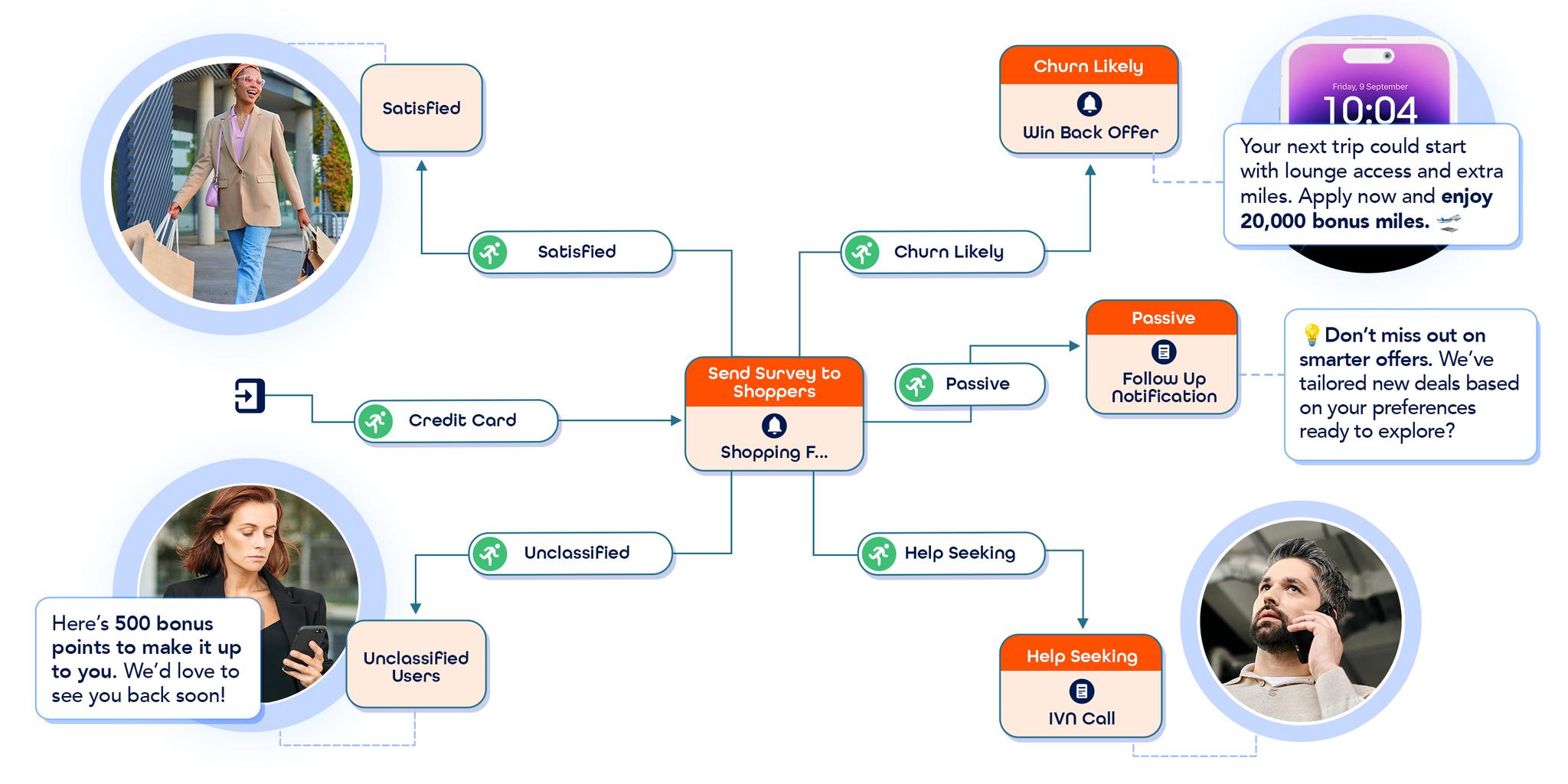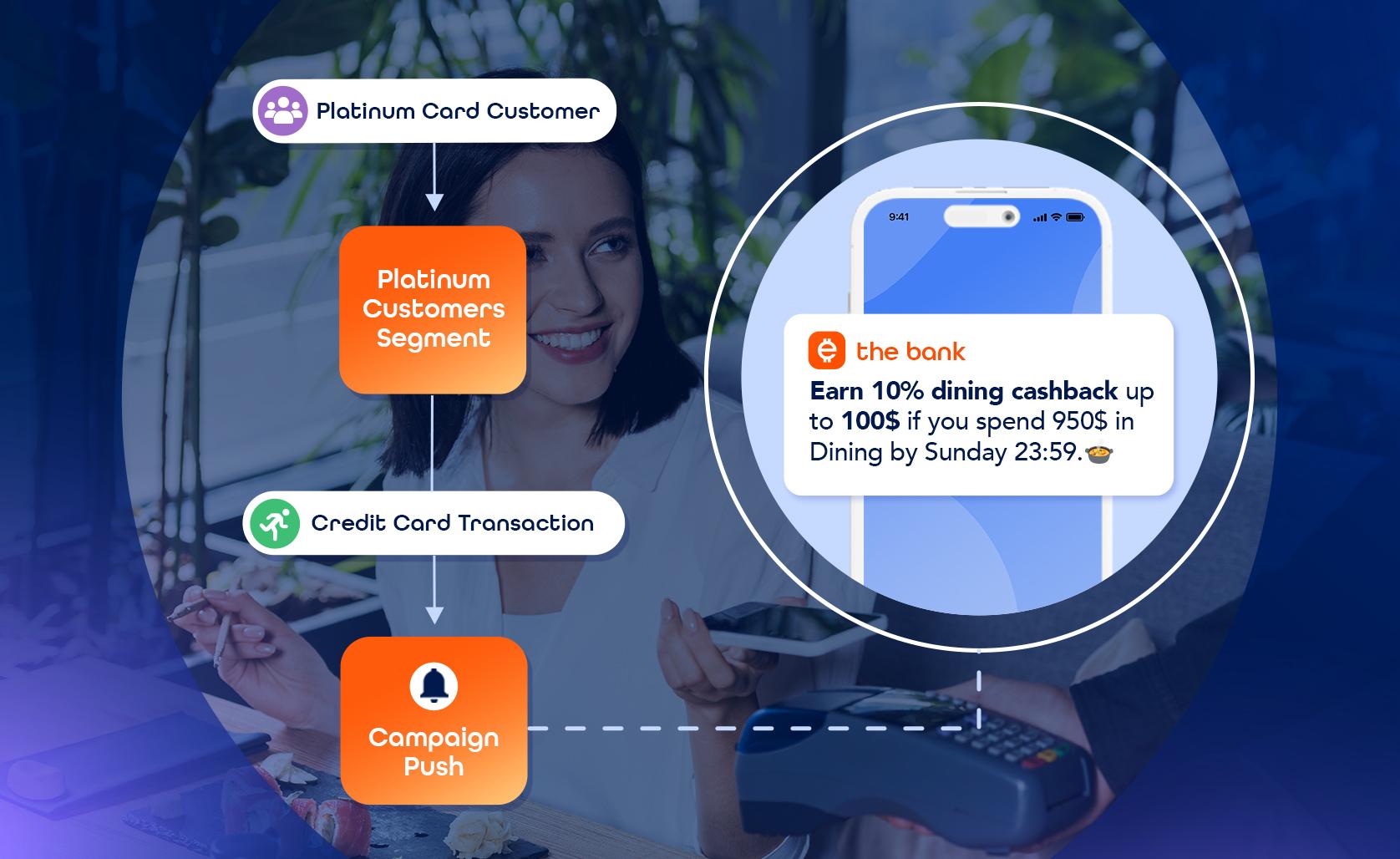- The Importance of Real-Time Engagement in Telco
- Understanding the Telecom Customer Lifecycle
- Onboarding: Setting the Stage for Lasting Relationships
- Real-Time Engagement Strategies Across the Customer Journey
- Personalization and Real-Time Marketing in Telecom
- Leveraging Technology: AI, Data Analytics, and Automation
- Live Customer Support: The Human Touch in Real-Time
- Churn Reduction and Customer Retention in the Telecom Industry
- Measuring Success: KPIs and Continuous Optimization
- Future Trends: 5G, IoT, and the Next Wave of Real-Time Engagement
- Conclusion: Building a Customer-Centric Telco for the Digital Age
- Frequently Asked Questions (FAQ)
Real-time engagement in telco is transforming the telecom industry. It enhances customer experience and satisfaction, driving loyalty and retention.
Telecom companies are embracing digital transformation to meet evolving customer expectations. This shift is crucial for staying competitive in a fast-paced market.
Real-time marketing in telecom allows for personalized interactions. It helps in delivering timely and relevant messages to customers.
Churn reduction is a significant challenge in the telecom sector. Real-time engagement strategies can effectively address this issue.
Live customer support plays a vital role in real-time engagement. It provides immediate assistance, improving customer satisfaction and trust.
Understanding the telecom customer lifecycle is essential. From onboarding to retention, real-time engagement is key to building lasting relationships.
Platforms like evamX support this shift by capturing real-time data, interpreting behavioral signals, and helping telcos act instantly across channels such as app, web, SMS, IVR, and call center. This enables a smoother, more contextual customer experience at every moment of the lifecycle.
The Importance of Real-Time Engagement in Telco
Real-time engagement in telco is not just a trend. It is a necessity in today's competitive landscape. With customer expectations rising, telcos must adapt quickly.
Traditional models of customer interaction are outdated. They fail to meet the demand for instant communication and personalization. Real-time engagement addresses these challenges head-on.
There are several critical benefits to adopting real-time engagement strategies:
- Enhanced customer satisfaction
- Increased customer loyalty
- Improved communication efficiency
By engaging customers in real time, telcos can deliver more than just services. They offer tailored experiences that meet individual needs. This personalization fosters a stronger connection between the brand and the customer.
Moreover, real-time engagement allows for agile responses. Telcos can address issues as they arise, preventing minor concerns from becoming major problems. This proactive approach helps improve overall customer retention. It also reduces churn rates, leading to long-term success in the telecom industry.
evamX strengthens this approach by enabling telcos to detect customer intent, trigger contextual actions instantly, and deliver the “next best experience” at the exact right moment, without relying on delayed batch processes.
Understanding the Telecom Customer Lifecycle
The telecom customer lifecycle is a complex journey with several stages. Each phase presents unique opportunities for engagement. Understanding this lifecycle is crucial for creating meaningful customer interactions.
The typical stages of the telecom customer lifecycle include:
- Awareness
- Consideration
- Purchase
- Onboarding
- Engagement
- Retention
- Advocacy
Each stage requires specific strategies to enhance the customer experience. For example, during the awareness stage, marketing efforts are vital. These help potential customers understand the brand's value.
As customers move through the lifecycle, their needs shift. Onboarding is an opportunity to make a great first impression. Engagement efforts during this phase set the tone for the relationship. Meanwhile, retention and advocacy efforts are crucial for long-term success.
By understanding the various stages, telecom companies can tailor their strategies. This ensures effective engagement, leading to satisfied, loyal customers who stick with the brand.
With its lifecycle-focused design, evamX helps telcos orchestrate relevant journeys for each phase, from activation triggers during onboarding to loyalty nudges during advocacy, using real-time signals to guide engagement.
Onboarding: Setting the Stage for Lasting Relationships
Onboarding is the first critical step in a telecom customer's journey. It's not just about activating a service, but about making a lasting impression. Effective onboarding experiences can significantly boost customer retention.
A seamless onboarding process ensures customers feel valued and understood from the start. This involves clear communication and easy setup of services. The goal is to minimize friction and address any initial concerns or questions promptly.
Key components of successful onboarding include:
- Personalized Welcome
- Guided Tutorials
- Quick Support
By focusing on these components, telecom companies can build trust early on. This trust lays the foundation for a strong relationship with the customer.
Additionally, feedback gathered during onboarding is invaluable. It helps identify potential issues and areas for improvement. By addressing these aspects, companies can enhance customer satisfaction and loyalty, setting the stage for positive long-term engagements.
evamX enhances onboarding by triggering real-time activation updates, eligibility checks, and personalized welcome flows, while guiding users automatically through early app and service experiences to reduce drop-offs.
Real-Time Engagement Strategies Across the Customer Journey
Real-time engagement is key throughout the telecom customer's journey. It involves responding to customer actions and needs instantly. This proactive approach enhances the overall customer experience.
At each stage, real-time strategies must be tailored to customer needs. In the initial phase, focus on welcoming customers. This can include real-time updates about activation and service setup. Keeping customers informed reduces anxiety.
As customers transition to regular usage, real-time notifications become crucial. These can include usage alerts and special promotions. Providing real-time data helps customers manage their plans effectively.
List of effective strategies:
- Instant Notifications
- Behavioral Triggers
- Feedback Loops
During service issues, timely resolution is imperative. Real-time chat support can address problems instantly. This not only resolves issues but also shows customers you care.
Advocacy is the final stage of the journey. Engaging real-time means recognizing and rewarding loyal customers. Special offers and VIP support can turn satisfied customers into brand advocates.

Incorporating these strategies throughout the customer journey adds value. It turns interactions into meaningful experiences, fostering long-term loyalty. By being present in real-time, telcos can create a seamless and supportive journey for their customers.
evamX supports these strategies with real-time triggers, omnichannel orchestration, and AI-driven recommendations that activate the right action at the exact moment behavior occurs, ensuring each interaction feels timely and relevant.
Personalization and Real-Time Marketing in Telecom
Personalization transforms generic interactions into tailor-made experiences. It starts with understanding customer preferences and behaviors. In telecom, real-time data offers insights crucial for personalization.
Telecom companies can leverage these insights for targeted marketing. Real-time marketing enables telcos to deliver the right message at the right moment. This approach not only captures attention but also drives conversions.
Real-time marketing strategies can include the following:
- Customized Offers
- Dynamic Content
- Location-Based Services
Dynamic campaigns showcase the power of real-time marketing. For instance, a customer might receive a data bundle promotion when nearing their limit. This timely intervention can prevent overages and enhance customer satisfaction.
Moreover, personalization is not just about selling. It’s about creating meaningful connections. Recognizing birthdays with special messages or rewards can enhance customer loyalty.
By focusing on personalization, telecom companies can meet individual customer needs. Real-time marketing keeps interactions relevant and engaging. This approach ultimately leads to improved customer retention and satisfaction.
Through AI-powered decisioning and real-time signal processing, evamX helps telcos deliver personalized offers, such as data top-ups, plan upgrades, or roaming packages, precisely when they matter most.
Leveraging Technology: AI, Data Analytics, and Automation
In the fast-paced telecom landscape, technology is a game-changer. AI and data analytics empower telcos to understand and anticipate customer needs. Automation enhances operational efficiency, making real-time engagement seamless.
AI algorithms analyze vast amounts of customer data. This analysis uncovers patterns and predicts future behaviors. Telcos can thus offer proactive solutions, enhancing customer satisfaction.
Data analytics provides real-time insights that shape strategies. It identifies customer pain points, enabling quick responses. Analytics-driven decisions lead to improved customer experiences.
Automation streamlines repetitive tasks, freeing up valuable resources. Automation can span various areas:
- Billing Processes
- Service Activations
- Customer Queries
Machine learning, a subset of AI, aids in refining services. It learns from every customer interaction, optimizing future engagements. This constant learning loop ensures that telecom services remain top-notch.
Embracing these technologies requires investment and a shift in mindset. The payoff, however, is substantial. Telcos that adopt AI, analytics, and automation position themselves as leaders.
These technologies enhance real-time engagement by offering personalized experiences. They also contribute to a competitive edge in a crowded market. By leveraging them, telecom companies can meet evolving customer expectations efficiently.
With built-in components like NBX decisioning and Evo - evamX enables telcos to automate journey flows, optimize offer selection, and continuously improve engagement using real-time insights and machine learning.
Live Customer Support: The Human Touch in Real-Time
Incorporating live customer support is vital for effective real-time engagement. It provides a personalized touch that technology alone cannot match. Customers appreciate the immediate, empathetic responses that live support offers.
Having skilled support agents is crucial. These agents bridge the gap between digital interfaces and human interaction. They provide solutions and build rapport, fostering customer loyalty.
Real-time support goes beyond just answering queries. It involves addressing customer concerns promptly and efficiently.
Here are some key components of live customer support:
- Empathy and Understanding
- Problem-Solving
- Proactive Communication
Available across various platforms, live support offers flexibility. It includes chat, phone, and social media interactions. These diverse channels ensure customers receive help in their preferred method.
Training is essential for maintaining high-quality support. Empowered agents equipped with knowledge deliver superior customer experiences. Live customer support remains indispensable, enhancing both satisfaction and loyalty in the telecom industry.
evamX complements human support by routing high-risk interactions, triggering help journeys, and capturing real-time feedback, helping agents step in at the right moment with the right context.
Churn Reduction and Customer Retention in the Telecom Industry
Reducing churn is critical for telecom companies. High churn rates can significantly affect profitability. Retaining customers is often more cost-effective than acquiring new ones.
Effective churn reduction begins with understanding customer needs. Telecom companies must gather insights from customer interactions. Identifying patterns of dissatisfaction can help create solutions. Strategies focused on retention should be proactive.
Personalized experiences play a crucial role in retaining customers. Tailoring services to individual preferences increases satisfaction. This approach fosters loyalty and long-term engagement.
Here are key churn reduction strategies:
- Predictive Analytics
- Feedback Loops
- Loyalty Programs
Telecom companies should address issues swiftly to retain their customer base. This requires resources and attention to the customer experience. Consistent and reliable services are vital to customer satisfaction.
Proactive communication is also essential. Keeping customers informed about services, upgrades, and benefits fosters trust. Engaging with customers throughout their journey increases retention, and reduces churn. This strategic focus ensures continuous customer relationships in a competitive landscape.
Using behavioral signals and predictive scoring, evamX identifies early churn risks and triggers personalized win-back offers, reminders, or support flows to keep customers engaged before dissatisfaction grows.
Measuring Success: KPIs and Continuous Optimization
Measuring success in real-time engagement is crucial. Key Performance Indicators (KPIs) provide insights into strategy effectiveness. They help telecom companies understand their impact on the customer experience.
Several important KPIs guide telecom companies. Customer Satisfaction Scores measure how well needs are met. Churn Rate indicates the percentage of customers leaving. Net Promoter Score (NPS) reflects customer willingness to recommend a service.
Here is a list of critical KPIs for telco success:
- Customer Satisfaction
- Churn Rate
- Net Promoter Score (NPS)
Continuous optimization is necessary. Telecom companies should regularly assess engagement strategies. This ensures efforts align with evolving customer expectations and market trends. Real-time data offers actionable insights, driving strategic adjustments for better outcomes. By focusing on KPIs and continuous improvement, telecom companies enhance both their offerings and customer loyalty.
evamX provides real-time dashboards and funnel analytics that help telcos track journey performance, optimize communication timing, and refine personalization strategies for improved KPIs over time.
Future Trends: 5G, IoT, and the Next Wave of Real-Time Engagement
The telecom industry stands at the brink of major change. 5G technology is set to transform real-time engagement. Its high speed and low latency provide unparalleled customer experiences.
Alongside 5G, the Internet of Things (IoT) is gaining momentum. The integration of connected devices offers telecom companies vast data opportunities. This data facilitates personalized and responsive interactions.
Here's what the future holds for telcos:
- 5G Advancements
- IoT Integration
- Predictive Engagement
These innovations drive real-time marketing in telecom forward. Advanced data analytics and AI will enhance the ability to predict and respond to customer needs. This will pave the way for more sophisticated engagement strategies.
Telecom companies must embrace these technologies to stay competitive. Investing in infrastructure and staying ahead of trends are vital for success. The future of real-time engagement promises enhanced customer experience and loyalty.
Built on streaming architecture and real-time event processing, evamX is designed to support next-generation telco requirements, including 5G-triggered journeys, IoT-driven actions, and predictive personalization powered by AI.
Conclusion: Building a Customer-Centric Telco for the Digital Age
Real-time engagement is transforming the telecom industry. To thrive in the digital age, a customer-centric approach is essential. By leveraging technology and personalization, telcos can create meaningful interactions.
Investing in advanced systems fosters stronger relationships. Continuous improvement of engagement strategies is crucial. As trends evolve, staying adaptable ensures competitiveness. Embracing innovation will lead to enhanced customer satisfaction and loyalty. Ultimately, a forward-thinking mindset will enable telcos to meet ever-changing customer expectations and thrive in an interconnected world.
As telcos continue to evolve, platforms like evamX help them stay adaptive, supporting real-time engagement across onboarding, digital journeys, retention flows, and future-ready customer experiences.
Frequently Asked Questions (FAQ)
1. What is real-time engagement in telecom?
Real-time engagement in telecom refers to responding instantly to customer actions, behavior, or network events across channels like app, web, SMS, or IVR. It enables telcos to deliver personalized messages, timely alerts, and contextual offers the moment customers need them. Platforms like evamX help process these signals in milliseconds.
2. Why is real-time engagement important for telcos?
Real-time engagement improves customer satisfaction, reduces churn, and increases retention by delivering relevant experiences at the right moment. It helps telcos address issues proactively, guide users during onboarding, and offer personalized recommendations based on live usage or behavior.
3. How does real-time engagement reduce churn in telecom?
Real-time engagement reduces churn by detecting early signs of dissatisfaction—such as inactivity, low usage, complaints, or unusual behavior—and triggering timely interventions. These can include personalized win-back offers, support outreach, or plan recommendations. evamX uses real-time signals and predictive insights to support these actions.
4. What role does real-time engagement play in the telco onboarding process?
During onboarding, real-time engagement ensures smooth activation by sending instant updates, guiding customers through setup steps, and providing personalized support. This helps reduce drop-offs and improves the first-time experience, which is critical for long-term retention.
5. How can telcos personalize customer experiences in real time?
Telcos personalize experiences by analyzing behavioral, contextual, and usage data. This enables them to deliver dynamic offers, location-triggered messages, usage alerts, and tailored communications. Real-time platforms like EvamX help automate this process with AI-driven decisioning.
6. What technologies enable real-time engagement in telecom?
Key technologies include AI, machine learning, customer data platforms, real-time event streaming, mobile SDKs, automation tools, and journey orchestration engines. These systems allow telcos to sense customer behavior instantly and deliver immediate, relevant responses.
7. How does real-time engagement improve the digital app and self-service experience?
Real-time engagement boosts app adoption and self-service usage by showing contextual prompts, guiding users through features, sending in-app tips, and helping resolve issues faster. This leads to higher satisfaction and reduced support-center volume.
8. What KPIs should telcos track for real-time engagement performance?
Important KPIs include Customer Satisfaction (CSAT), Net Promoter Score (NPS), Churn Rate, App Adoption Rate, Offer Acceptance Rate, Usage Growth, and Engagement Rate. Telcos also monitor journey performance and real-time trigger responsiveness using platforms like evamX.
9. How will 5G and IoT impact real-time engagement in telecom?
5G and IoT will significantly enhance real-time engagement by enabling ultra-fast responses, richer context, and new data-driven use cases. Telcos will be able to trigger more precise, instant actions—such as device-level alerts, personalized offers, and predictive support.
10. What is a real-time engagement platform for telcos?
A real-time engagement platform is a system that processes customer events instantly and triggers personalized journeys across digital and offline channels. It unifies data, applies AI decisioning, and automates lifecycle campaigns. evamX is an example of such a platform, designed specifically for high-volume telco environments.








